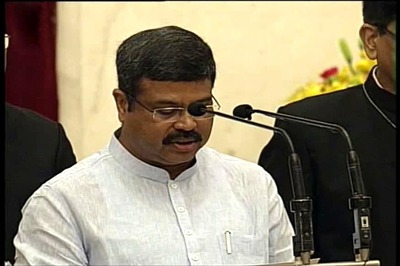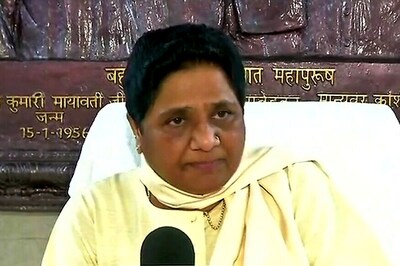
views
Supreme Court Justice Sonia Sotomayor has repeatedly criticized her fellow justices for creating, as she put it in a 2018 dissent, an “absolute shield” for police officers accused of excessive force. So Reuters reporters decided to test her words.
Sotomayor isn’t alone in faulting the court for making it too easy for cops accused of violating the Fourth Amendment to the U.S. Constitution, which protects the public from unreasonable search and seizure. Groups from across the political spectrum have set their sights on the obscure legal doctrine known as qualified immunity, created half a century ago to shield police and other government employees from legal liability for actions they take on the job.
But no one had measured whether the critics were right: Were the Supreme Court’s actions making it easier for police to beat back lawsuits by claiming qualified immunity? And how were the high court’s interventions playing out in the lower courts?
To answer these questions, Reuters reporters built and analyzed a database made up of information from all three levels of the federal courts: district and appellate courts and the Supreme Court.
APPELLATE COURTS
Reporters first analyzed 529 federal circuit court opinions published from 2005 through 2019 on appeals of cases in which cops accused of excessive force raised a qualified immunity defense. Not all opinions are published, but those that are set precedent for lower courts.
We identified the cases by searching written opinions in Westlaw, a legal research service owned, like Reuters, by Thomson Reuters Corp. Westlaw researchers estimate that the search captured nearly all relevant cases. Reporters manually reviewed almost 1,000 opinions to eliminate those unrelated to excessive force or for which no qualified immunity defense was raised. Among those excluded from the analysis were claims against correction officers for incidents that occurred in jails and prisons.
For every relevant opinion, reporters recorded dozens of characteristics related to the facts of the case, such as whether and how the civilian was armed, the type of force the officers applied, and whether the civilian was injured or died in the encounter with police. We also recorded whether the court granted qualified immunity and some specifics about that decision. For example, did the court find that the civilian’s civil rights may have been violated, or did the court skip this question? Did the court find a clearly established precedent that the force was unconstitutional?
Our analysis of this data showed the appellate courts’ growing tendency, influenced by guidance from the Supreme Court, to grant police immunity. More than ever, they are ignoring the question of whether cops have violated a plaintiff’s constitutional rights, thereby avoiding establishing a precedent for future cases and making it harder to win cases against the police. The failure to set precedents is particularly challenging for plaintiffs because the data also showed that appellate courts are increasingly requiring a nearly identical case from the past to serve as a precedent that clearly establishes an officer’s actions as illegal – a high standard that again makes it hard to win against the police.
The appellate court analysis revealed another important finding: Though the U.S. judicial system prides itself on impartiality and the even application of justice across the nation, wide regional variations exist in the rate at which officers win immunity appeals. To probe this phenomenon more deeply, Reuters turned to the district courts, where litigation begins.
DISTRICT COURTS
We focused on federal districts in Texas, a state within the jurisdiction of the 5th U.S. Circuit Court of Appeals, where police won appeals at a high rate, and California, in the 9th Circuit, where their success rate was much lower. We looked at qualified immunity decisions from 2014 to 2018 and recorded how judges in the different districts interpreted the Supreme Court’s recent guidance.
It is impossible to build a complete list of excessive force, qualified immunity cases from district court data, but after consulting with legal specialists, Reuters reporters are confident they reviewed the vast majority of cases. We started by filtering Westlaw’s federal district court docket listings to identify all civil rights cases, which is how almost all excessive force cases start. We further whittled the list by selecting only cases with the types of motions in which qualified immunity typically is raised.
Our analysis found striking differences in how district judges in the two states were ruling on qualified immunity requests, despite a mandate to follow and apply the same Supreme Court precedents. Judges in Texas, for example, were more likely to grant immunity to officers who used force against unarmed civilians than judges in California did for officers in cases where civilians were armed.
SUPREME COURT
In one of her dissents, Justice Sotomayor called out a “disturbing trend” in which the Supreme Court intervened more often at the request of officers than civilians.
To quantify just how often this was happening, Reuters downloaded the Supreme Court’s docket and paired it with Westlaw data to identify police use-of-force cases mentioning qualified immunity. Reuters used decisions from the Supreme Court’s terms from 2005 through 2018, the last term for which complete data was available.
Reporters again manually reviewed cases to determine which party petitioned the court and the petition’s outcome. We excluded pro se cases, those in which petitioners served as their own lawyers, because requests not drafted by attorneys have a significantly lower success rate. In total, Reuters identified 121 relevant petitions – 65 submitted by police and 56 submitted by civilians.
Our data confirmed Sotomayor’s statement. An officer was 3.5 times more likely than a civilian to have a petition accepted.
The circumstances of a case – whether a civilian drew a weapon or resisted arrest, for example – can influence judicial decisions on qualified immunity. Yet even after controlling for such factors, we still found a significant increase over time in appeals decisions granting qualified immunity, as well as significant differences in outcomes between regions and in the Supreme Court’s own decisions about whether to take a case.
(Edited by John Blanton and Janet Roberts)
Disclaimer: This post has been auto-published from an agency feed without any modifications to the text and has not been reviewed by an editor




















Comments
0 comment